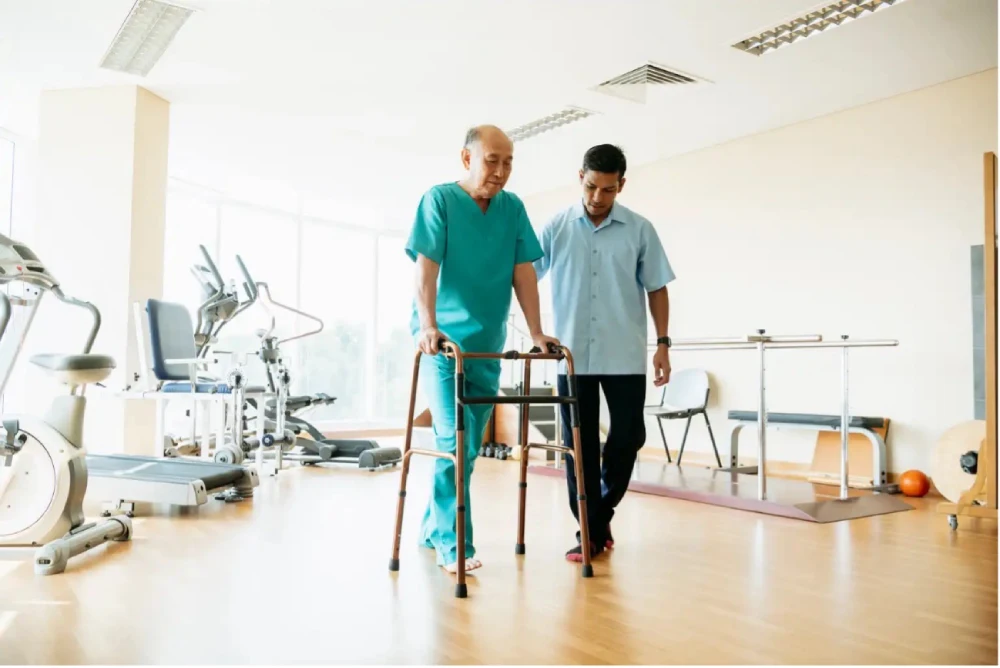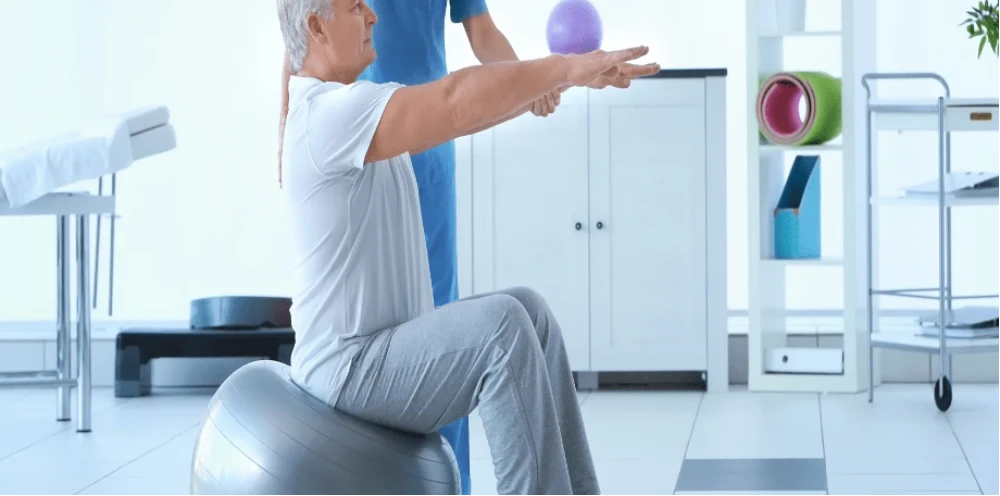A person’s life can be severely changed by traumatic brain injury (TBI), which can have an impact on their mental, emotional, and physical well-being. For the purpose of regaining function and enhancing quality of life, long-term rehabilitation is equally as crucial as emergency medical care. A possible route to long-term healing and improvement is through tbi rehab exercises and programs designed specifically for traumatic brain injury patients. This article examines the value of exercises for rehabilitation activities West Vancouver , outlining their benefits and providing a comprehensive guide of activities meant to help people with traumatic brain injuries heal.

What Is TBI Exactly?
The term “traumatic brain injury” (TBI) describes a brain injury brought on by an outside force, like a blow to the head or a penetrating head injury. Traumatic brain injuries (TBIs) can be minor (like a concussion) or severe, and they can affect cognitive, physical, and emotional functioning in a variety of ways.
Typical circumstances in which a TBI could happen include:
TBI is used in some situations including:
- sports-related injuries such as concussions sustained in boxing, football, or soccer.
- Auto crashes, in which people may sustain brain injuries from collisions.
- Falls, especially in elderly people or little children.
- Violent or physical attacks.
- Injuries sustained in military warfare, such as concussions from blasts.

TBI Rehab Exercises
Rehabilitation exercises for TBI aim to improve various aspects of physical and cognitive function affected by the injury. These exercises are typically tailored to the individual’s specific needs and may include:
1. Balance and Coordination Exercises:
These exercises for tbi patients focus on improving balance, stability, and coordination, which may be impaired following a TBI. Examples include standing on one leg, walking heel-to-toe, and using balance boards or stability balls.
2. Strength Training
Strengthening exercises target muscles that may have weakened due to inactivity or injury. This can include resistance training using weights, resistance bands, or bodyweight exercises such as squats, lunges, and arm curls.
3. Range of Motion Exercises
Range of motion tbi rehab exercises help maintain or improve flexibility in joints and muscles affected by TBI. These will include gentle stretching exercises for the neck, shoulders, arms, and legs.
4. Cardiovascular Exercise
Aerobic exercise, such as walking, cycling, swimming, or using elliptical machines, helps improve cardiovascular fitness, endurance, and overall health.
5. Cognitive Rehabilitation Exercises:
The goal of these exercises is to enhance cognitive abilities like language, memory, focus, and problem-solving. Puzzles, memory tests, reading comprehension drills, and computer-based cognitive training programs are a few examples of possible activities.
stroke rehabilitation exercises
6. Gait Training:
Gait training exercises are designed to help people with walking challenges by enhancing their walking patterns, balance, and coordination. This could entail utilizing walking aids like walkers or canes or practicing walking with the help of a therapist.
7. Functional Activities
Individuals can regain independence in daily life activities with the aid of rehabilitation programs that imitate everyday tasks. Under the supervision of a therapist, this could entail practicing grooming, cooking, clothing, and domestic tasks.
TBI rehab exercises focus on balance, strength, flexibility, cardio, cognition, gait, and daily tasks to aid recovery from traumatic brain injury.

Sitting Balance Exercises for TBI Patients
Maintaining balance when sitting is crucial for carrying out regular tasks and moving on to more difficult workouts. TBI patients frequently struggle with sitting balance because of cooperated postural control and core strength. Sitting balance exercises for tbi patients that help develop core muscles and increase stability include trunk rotations and seated marches. The ability to balance while sitting is further improved and patients are better prepared for upright activities by moving on to increasingly difficult exercises like dynamic reaching tasks or seated balance on unstable surfaces.
Home Exercise Program for TBI Patients
Home exercise program for tbi patients should be designed to address the individual’s specific needs and abilities while considering safety and comfort. Here’s a general outline of exercises that may be included in a home program for TBI patients:
- Warm-Up: Begin with mild activities to warm up the body and prepare for the activity. Light aerobic exercises like walking around the house or marching in place could be included in this.
- Strength Exercises: Perform exercises to strengthen major muscle groups. Examples include:
- Bodyweight squats: Stand with feet shoulder-width apart, bend knees and lower into a squat position, then return to standing.
- Wall push-ups: These include facing a wall, placing your hands shoulder-height on the wall, and pushing away from the wall.
- Leg lifts while seated: Take a seat, extend one leg in front of you, hold it for a short while, and then bring it back down. Continue with the opposite leg.
- Bicep curls: Bend elbows, raise weights toward shoulders, and hold small dumbbells or everyday items (such as water bottles) in each hand.
- Balance and Coordination Exercises: Include activities to improve balance and coordination, such as:
• Standing on one leg while holding onto a secure surface for support if needed.
• Walking heel-to-toe in a straight line.
• Practicing standing up from a seated posture without utilizing hands for support.
- Flexibility Exercises: Include mild stretches to increase range of motion and flexibility. Pay attention to the primary muscle groups in your arms, legs, neck, and shoulders.
Home exercise programs for TBI patients include warm-ups, strength exercises like squats and wall push-ups, balance activities such as standing on one leg, and flexibility stretches.
Exercises for Spasticity in TBI Patients at Home:
Spasticity, that is characterized by muscle stiffness and involuntary contractions, is a typical condition for TBI patients, affecting mobility and function. Exercises spasticity tbi patients at home support medical interventions such as medication and injections by treating underlying muscle imbalances and encouraging relaxation. Gentle stretching exercises, massage techniques, and range of motion activities can help reduce muscle tightness and enhance flexibility, boosting overall comfort and mobility for TBI patients.

Conclusion
Tbi rehab exercises and programs serve as a cornerstone in the rehabilitation journey of TBI patients, offering a practical and effective means of promoting recovery and restoring function. These programs address the complex nature of traumatic brain injury and enable patients to restore their independence and quality of life by including a wide variety of activities customized to meet individual needs. Home-based rehabilitation activities give traumatic brain injury (TBI) patients the resources and encouragement they need to maximize their recovery and succeed in their long-term rehabilitation as part of an inclusive treatment plan. Make an appointment for West Vancouver RMT , chiropractic and physiotherapy through the website.
hip exercises after hip surgery
Customized traumatic brain injury (TBI) rehabilitation activities are essential to function restoration and quality of life enhancement at West Vancouver Clinic. These exercises are tailored to meet the specific needs of each patient and may involve strengthening, flexibility, balance, and coordination exercises. Patients perform targeted exercises such as leg lifts, dynamic reaching tasks, and sitting balancing drills under the supervision of professional therapists to address specific deficiencies and aid in recovery. Call us today to set up a session at your convenient time.